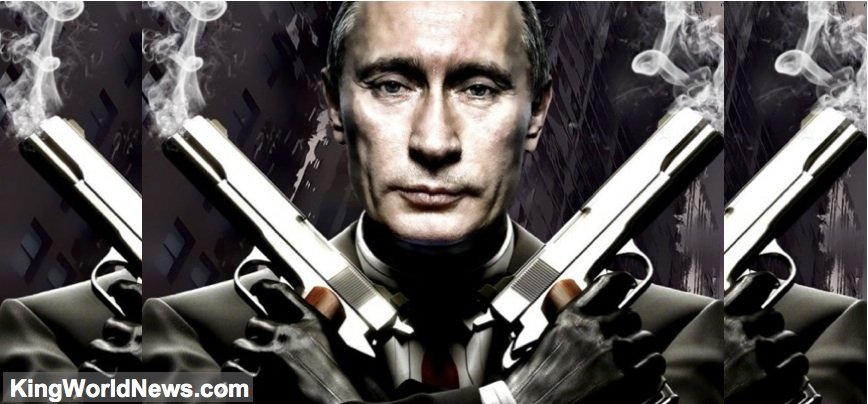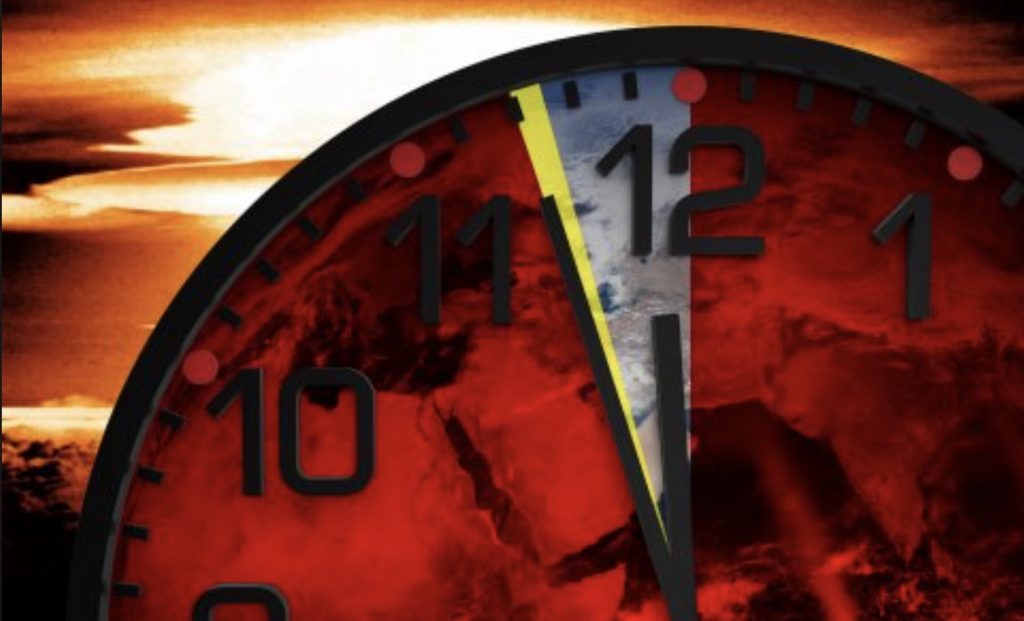
Gold, War And A Doomsday Clock Ticking
August 11, 2022 (King World News) – Dr. Stephen Leeb:
Russians Continue To Roll, Will Take Odessa Soon
As for Ukraine, there has been little change. Russia continues to make progress, while credible reports suggest Ukraine resistance is crumbling. Ukraine had previously promised a major counterattack this month to take back Kherson. The site of the counterattack is currently occupied by a massive number of Russian brigades, which you’d see only if Russia is preparing an offensive operation. At the current pace, within a month or so Russia will be on the outskirts of Odessa and poised to completely seize the country’s access to the sea.
The media here is starting to get the message but isn’t quite there yet. Current CIA head William Burns, a diplomat with more than 30 years of service, recently said that Russian casualties in Ukraine were likely in the area of 15,000. The New York Times then published an article that said Russian casualties approximated 75,000. Moreover, it said the Russian army was in tatters and ready to give up the fight. Really? The reality is that Russia has only about 15% of its army in Ukraine. That will become evident this month when Russia’s army is on display in its yearly military drills.

What has been shown in both Ukraine and Taiwan is that the U.S. is ill prepared to fight a real war. The British military think tank RUSI summed up the differences between the U.S. and our two adversaries as follows:
“The war in Ukraine demonstrates that war between peer or near-peer adversaries demands the existence of a technically advanced, mass scale, industrial-age production capability. The Russian onslaught consumes ammunition at rates that massively exceed U.S. forecasts and ammunition production. For the U.S. to act as the arsenal of democracy in defense (sic) of Ukraine, there must be a major look at the manner and the scale at which the U.S. organizes its industrial base.”
This situation is especially critical because behind the Russian invasion stands the world’s manufacturing capital – China. As the U.S. begins to expend more and more of its stockpiles to keep Ukraine in the war, China has yet to provide any meaningful military assistance to Russia. The West must assume that China will not allow Russia to be defeated, especially due to a lack of ammunition. If competition between autocracies and democracies has really entered a military phase, then the arsenal of democracy must first radically improve its approach to the production of material in wartime.
Gold Is The Path Forward
All the above serves to make plain how much has changed since the era in which the U.S. was the world’s indisputably greatest country. And further changes lie ahead – hopefully, if we make the right choices, ones that will ultimately point to a brighter future for this country and for the world at large. For investors, however, the choice is clear:
All these changes make it essential that you make gold the center of your investment life. Whatever turmoil the world may experience, it isn’t crass to seek financial survival and prosperity, and gold is the path to achieving those aims.
And here I want to expand a bit on what makes gold so special. In a way, gold really is a gift from the stars. Gold’s special qualities, which distinguish it from everything else, is a major reason it has served us so well in the past. During America’s periods of greatness, gold was at the center of our monetary system. It provided the discipline needed for steady and productive growth – a role I still feel it can and will assume on a worldwide basis…
My Research On Gold 30 Years Ago
One personal anecdote has always stayed with me. More than 30 years ago I was writing a book on stocks and other assets. At the time, I didn’t know much about gold, though I knew that the 1970s had been a great decade for gold investors. In those days, there wasn’t the same opportunity to do research over the internet as there is today, and I was having trouble finding anything interesting to say about gold apart from what was common knowledge.
I decided to take a walk, and on my way back I stopped to pick up the mail. In the mailbox was the latest issue of Nature, the prestigious British science magazine and, coincidentally, the magazine’s cover story was on gold and its very special properties. The story related to recent experiments concerning gold’s singular qualities. I recently was able to find that 1995 article online. The abstract to the article began:
“The unique role that gold plays in society is to a large extent related to the fact that it is the most noble of all metals: it is the least reactive metal towards atoms or molecules…To understand the nobleness of gold, we have studied a simple surface reaction.”
You can easily argue that this specialness is what makes gold, which is virtually indestructible, beautiful across cultures. You might even say that while beauty is in the eye of the beholder, in the case of gold every beholder has agreed it is beautiful.
Gold, Commodities And The Cap On 10-Year Yields
Before closing, I want to apologize for a mistake I made in my last article. In discussing the ratio of household debt to GDP, I relied on what is usually a credible source, Statista, which cited World Bank data. I should have checked with the World Bank directly, as the numbers looked odd to me. Whenever I make a mistake, I try to learn from it, and this time I learned a lot. I’ll give more details in future articles.
For now, the statistics used to rationalize why there is an upper limit on 10-year bond yields of about 3.5%, while flawed, led me to other credible sources and academic publications that make the case even stronger.
Bond yields high enough to dramatically slow the economy are very unlikely.
As a consequence, while inflation may slow a bit, rising prices – perhaps sharply rising prices – are likely to persist for the foreseeable future. Though many are talking about the major break in commodity prices, in reality spot prices are down less than 10% from their all-time highs and have recently shown signs of firming. It’s one more reason the case for gold, as well as other commodities, remains overwhelming.
The All-Important Crossroads
The U.S. economy is at a critical crossroads. We’ve been approaching it for years, but recent missteps – specifically, our actions vis-à-vis Ukraine and China – have brought us abruptly to the edge. And there’s a lot at stake.

Our actions in Ukraine and our willingness to provoke the Chinese to where they appear to have rejected moderation in favor of open hostility have backfired, leaving us in a weakened position.
We can choose to continue along this path, in which we are splintering the world into two parts with the U.S. and our relatively few allies forming by far the smaller part. Or – a much better option – we could decide to cooperate with nations whatever their beliefs and political systems so as to confront the enormous global and truly existential challenges that face us all as resource scarcities accelerate. Every misstep we make narrows the window of choice and makes more dire the consequences of choosing the wrong path.















